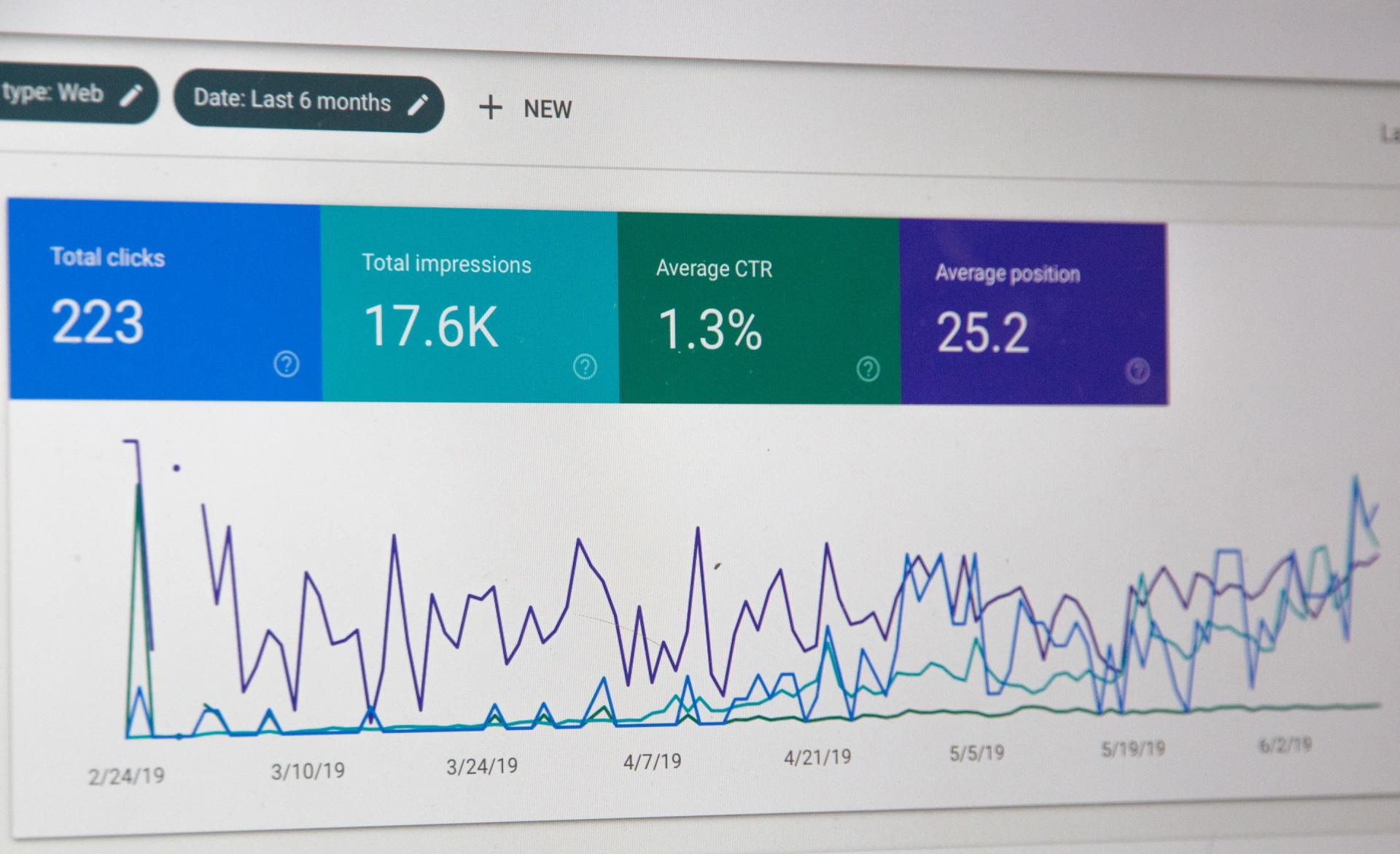Business Failure Statistics: A Data Driven Guide to Beating the Odds
Business Failure Statistics: What the Data Reveals About Small Business Survival
Here's a sobering reality: barely half of all businesses make it past their fifth anniversary. The U.S. Bureau of Labor Statistics puts that
survival rate at just 49.4%, which sounds bad if you're thinking about starting your own company. But here's the thing knowing these numbers doesn't have to scare you away from entrepreneurship. Instead, think of them as your roadmap for what to avoid.
Sure, the stats are frightening. One in five businesses won't even see their first birthday, and by year ten, nearly two thirds have closed their doors for good. Yet thousands of entrepreneurs beat these odds every year, and there's usually a clear reason why some make it while others don't. In this article, we're going to unpack exactly what the Bureau of Labor Statistics tells us about business failures when they happen, which industries are hit the hardest, and most importantly, why companies actually fail. Armed with this knowledge, you'll know what pitfalls to sidestep on your own entrepreneurial journey.
Elevate your business with a custom built website from Salt Creative — schedule your free strategy session now!
A Timeline of Survival: Business Failure by Key Milestones
When you look at the raw numbers from the Bureau of Labor Statistics, the timeline of business failure tells a pretty clear story. It's not just about whether your company will make it, it's about when you're most vulnerable.
Let's start with the three year mark, which many consider the first real test. Based on the latest Bureau of Labor Statistics data tracking businesses born in 2013, approximately
39.7% of businesses fail within their first three years. That means if you launched with 100 other entrepreneurs, only about 61 of you would still have your doors open after three years. It's a tough pill to swallow, but this is where you see the initial business model flaws really start to show.
The five year milestone is where things get even more challenging. Roughly
48.4% of businesses don't survive to see their fifth birthday. Think about that you're essentially flipping a coin on whether your business will make it half a decade. This is typically when the reality of sustained competition, cash flow management, and market changes really hit home.
But here's where it gets brutal: the ten year mark. A staggering 65.1% of businesses fail within their first decade, meaning only 34.7% of businesses that started in 2013 were still operating by 2023. To put this in perspective, if you attended a business networking event with 100 new entrepreneurs, statistically only about 35 of those businesses would still exist ten years later.
Looking at recent trends, the Bureau of Labor Statistics shows some interesting patterns in business failure rates. The steepest drop happens right away survival rates fall by 20.4 percentage points from the first to second year of operation. After that initial cliff, the decline becomes more gradual but never really stops. What's particularly telling is that survival rates hit their lowest points during recession years, with establishments born in 2001 and 2008 showing particularly poor one year survival rates.
The data shows that while the first year is make or break for many businesses, those who survive the initial hurdles still face significant challenges ahead. Each milestone represents another round of businesses that couldn't adapt, scale, or maintain profitability in an increasingly competitive marketplace.
The Reality on Main Street: Small Business Failure Statistics
When we talk about business failures, we're mostly talking about small businesses. The SBA's Office of Advocacy defines a small business as an independent business with fewer than 500 employees, though the exact definition can vary by industry. These aren't the Fortune 500 companies making headlines they're the mom and pop shops, local restaurants, and neighborhood service providers that form the backbone of American commerce.
Here's what makes small business statistics so eye opening: they make up
99.9% of all firms in the United States and employ nearly half of all private sector workers. From 1994 to 2021, the average five year survival rate for new employer establishments was just 49.2%, while only 33.8% survived a full decade. That means about two thirds of small businesses don't make it to their tenth birthday.
Small businesses face unique challenges that contribute to these high failure rates. Unlike large corporations, they can't weather financial storms as easily one bad quarter or unexpected expense can be devastating. They often lack access to capital, struggle with cash flow management, and don't have the resources for extensive market research or professional management teams. Many small business owners wear multiple hats, trying to handle everything from operations to marketing to bookkeeping.
The COVID-19 pandemic highlighted just how vulnerable these businesses are. By April 2020, 51.4% of small businesses reported being negatively impacted by the pandemic, and while this improved over time, many never fully recovered. Despite generating
61.1% of net new jobs since 1995, small businesses continue to face an uphill battle for long term survival.
Not All Fields Are Equal: Business Failure Rate by Industry
If you think all industries face the same odds when it comes to business survival, think again. The latest Bureau of Labor Statistics data tracking businesses from 2013 to 2023 reveals some pretty dramatic differences across sectors.
Here's what might surprise you:
Agriculture leads the pack with the best ten year survival rate at 50.5%, meaning roughly half of farming and related businesses actually make it to their tenth year.
Utilities come in second at 45.7%, followed by manufacturing at 43.6%. These industries benefit from essential demand people always need food, power, and manufactured goods.
On the flip side, some sectors are brutal for long term survival.
Mining, quarrying, and oil extraction have the worst track record, with only
24.5% of businesses surviving a decade. The information sector (which includes tech and media companies) isn't much better at 29.1%, and wholesale trade sits at 30.1%.
Construction tells an interesting story. While it doesn't have the worst ten year survival rate at 40.1%, it experiences the steepest first year decline of any major industry losing 24 percentage points right out of the gate. That's likely due to the industry's dependence on economic cycles and the relatively low barriers to entry that flood the market with new competitors.
Healthcare and social assistance land in the middle at 35.7%, which might seem low given the essential nature of medical services. However, this sector faces unique challenges like heavy regulation, high insurance costs, and significant startup capital requirements.
Retail trade (41.7%) and
accommodation/food services (38.2%) also struggle with below average survival rates, largely due to intense competition, thin profit margins, and changing consumer behavior.
Why do these differences exist? Industries with higher barriers to entry, essential services, or less competition tend to have better survival rates. Meanwhile, sectors with low startup costs, high competition, or vulnerability to economic swings see more failures.
This data would be perfectly illustrated by a simple comparison chart showing ten year survival rates across industries making it easy to spot which fields give new businesses the best fighting chance.
Beyond the Data: The Top 10 Reasons Why Businesses Fail
1. Running Out of Cash
This isn't just about having money
it's about managing it properly. Studies show that 82% of businesses fail due to poor cash flow management. You might have plenty of revenue on paper, but if customers pay late and your bills come due now, you're in trouble. Cash flow is the lifeblood of any business, and without it, even profitable companies can collapse overnight.
2. No Market Need
About 42% of startups fail because they build something nobody actually wants. It sounds obvious, but many entrepreneurs fall in love with their idea before they've proven there's real demand for it. Just because you think it's brilliant doesn't mean customers will pay for it.
3. Getting Outperformed
Sometimes you have a great product and solid finances, but competitors simply do it better, faster, or cheaper. This is especially brutal in crowded markets where
established players have deeper pockets and more experience. Small businesses often underestimate how hard it is to compete against well funded rivals.
4. Flawed Business Model
Your business model is how you make money, and if it's broken, everything else falls apart. Maybe your costs are too high, your pricing is wrong, or you can't scale efficiently. A flawed model means you'll never generate sustainable profits, no matter how hard you work.
5. Poor Marketing
Build it and they will come? Not likely. Many businesses fail because they can't effectively reach their target customers or communicate their value proposition.
Good marketing isn't just advertising it's understanding your audience and connecting with them in meaningful ways.
6. Wrong Team
Having the
wrong people in key positions can sink a business fast. This includes co-founders who don't get along, employees who lack necessary skills, or leadership that can't adapt when things get tough. Team problems create ripple effects throughout the entire organization.
7. Pricing Problems
Price too high and customers walk away. Price too low and you can't cover costs. Finding that sweet spot is trickier than it looks, especially when you factor in competition and customer perception of value.
8. Poor Financial Management
Beyond cash flow, this includes inadequate budgeting, not understanding your numbers, and failing to plan for unexpected expenses. Many small business owners are great at their craft but terrible at the financial side.
9. Lack of Planning
Flying by the seat of your pants might work initially, but sustainable businesses need solid planning. This includes market research, financial projections, and having backup plans when things don't go as expected.
10. Pivoting Too Late (or Not at All)
Sometimes your original idea just isn't working, and stubbornly sticking to it instead of adapting can be fatal. Successful businesses know when to pivot and aren't afraid to make tough changes when the data says they should.
Conclusion
The numbers tell a tough story. Around 40 percent of businesses shut down within three years, about half are gone by year five, and only one out of three makes it past ten years. At first glance, those stats can feel discouraging. But if you look closer, they actually highlight the path to survival.
Most businesses don’t fail because the economy collapsed or because the owners were unlucky. They fail from mistakes that could have been avoided. Cash flow is usually the first trap. If you don’t know exactly what’s coming in and going out and if you don’t keep a buffer for surprises you’re setting yourself up for trouble. The next big one is launching without really testing the market. You need to talk to people, get feedback, and be sure they’ll actually pay for what you’re offering. And finally, you’ve got to choose your industry carefully and understand the uphill battles that come with it.
Every entrepreneur who made it through these odds started in the same place as you. They weren’t necessarily geniuses or incredibly lucky. What set them apart is that they paid attention, learned from other people’s mistakes, and planned for the challenges ahead. You don’t have to be another failed statistic. With this knowledge in hand, you’ve already taken a step toward being one of the businesses that lasts.










